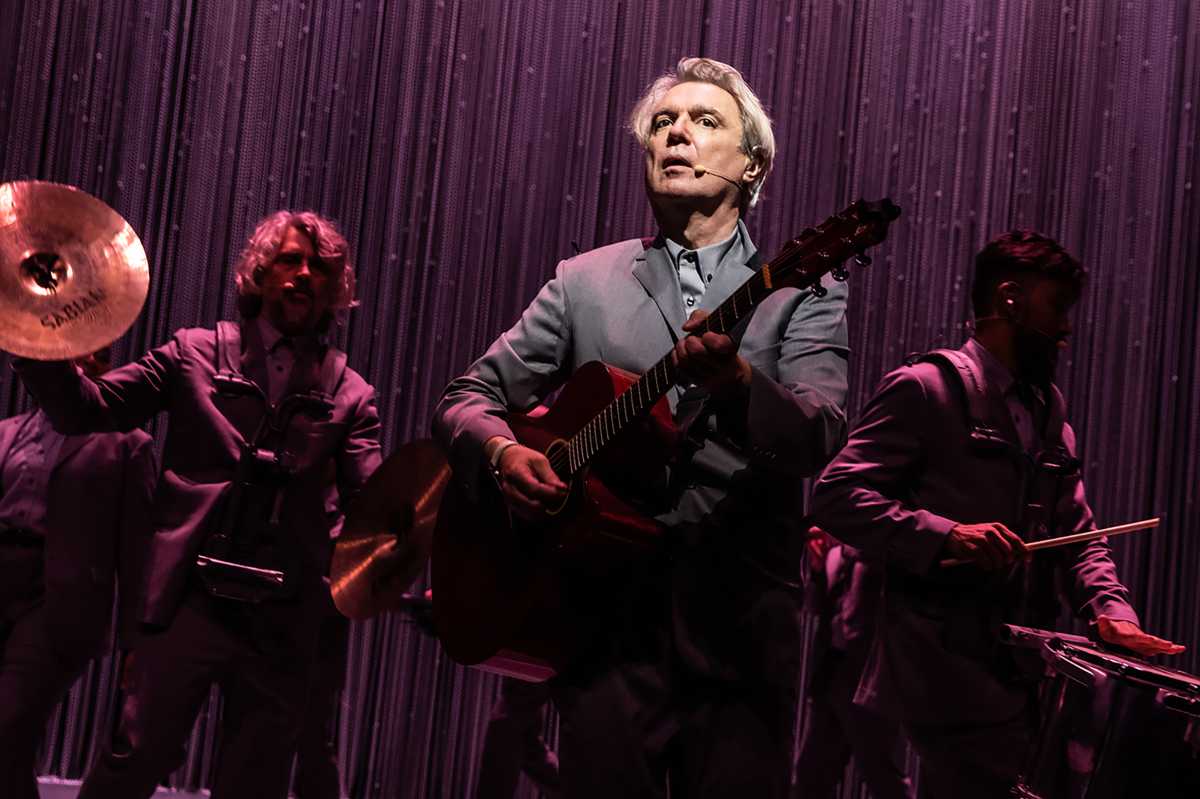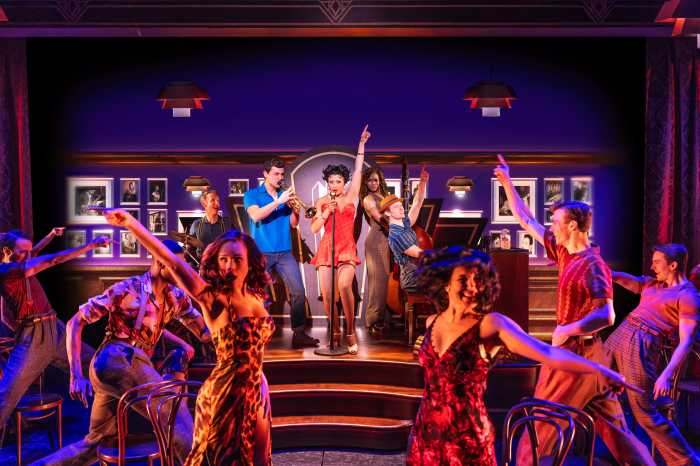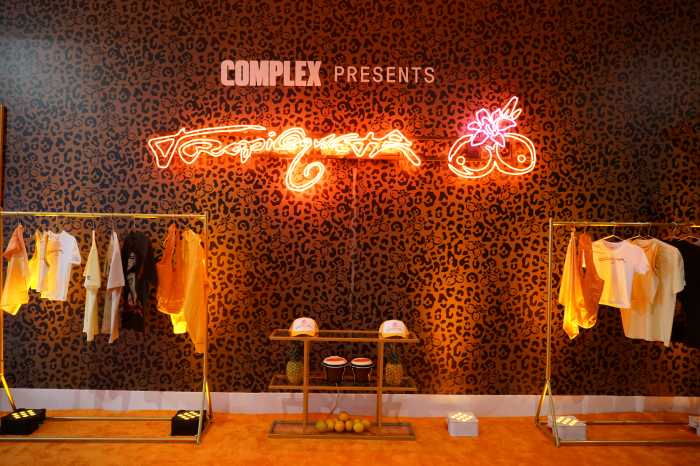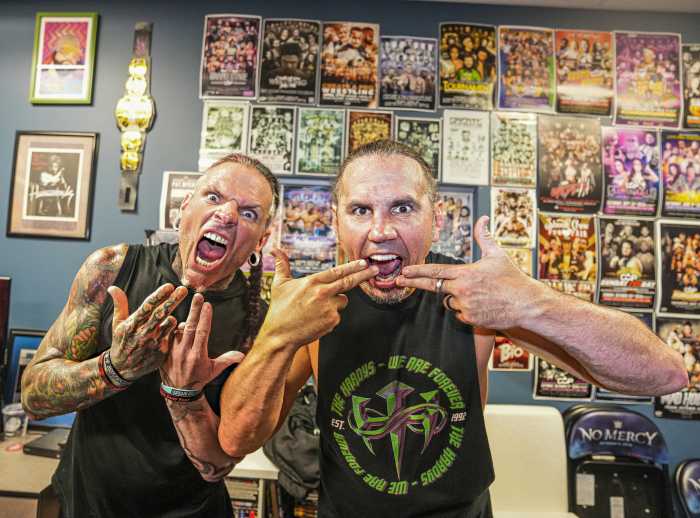We could spend hours – perhaps even days – trying to categorize and make sense of “American Utopia,” a sleek, experimental, vaguely political mega-concert starring 67-year-old Talking Heads frontman David Byrne, who is joined by a nimble ensemble of 11 musicians, dancers and back-up singers.
But at the end of the day, “American Utopia” – whatever it ultimately is – is pretty damn spectacular.
The Scottish-born Byrne – whose many credits range from new wave singer-songwriter and record producer to artist, author and bicyclist – ought to have arrived on Broadway several years ago as the songwriter of the Imelda Marcos bio musical “Here Lies Love,” which enjoyed two hit Off-Broadway runs, but its innovative dance club setting may have been too hard to stage in a traditional theater.
“American Utopia,” which comes to Broadway following an international tour, bears the title of Byrne’s 2018 solo album, but the show’s 21-number, 100-minute setlist also includes various Talking Heads hits (including “Road to Nowhere” and “Burning Down the House,” which manages to get the entire house on its feet), a nonsensical Dada poem and Janelle Monáe’s protest song “Hell You Talmbout” (which invokes the names of African-American victims of violence).
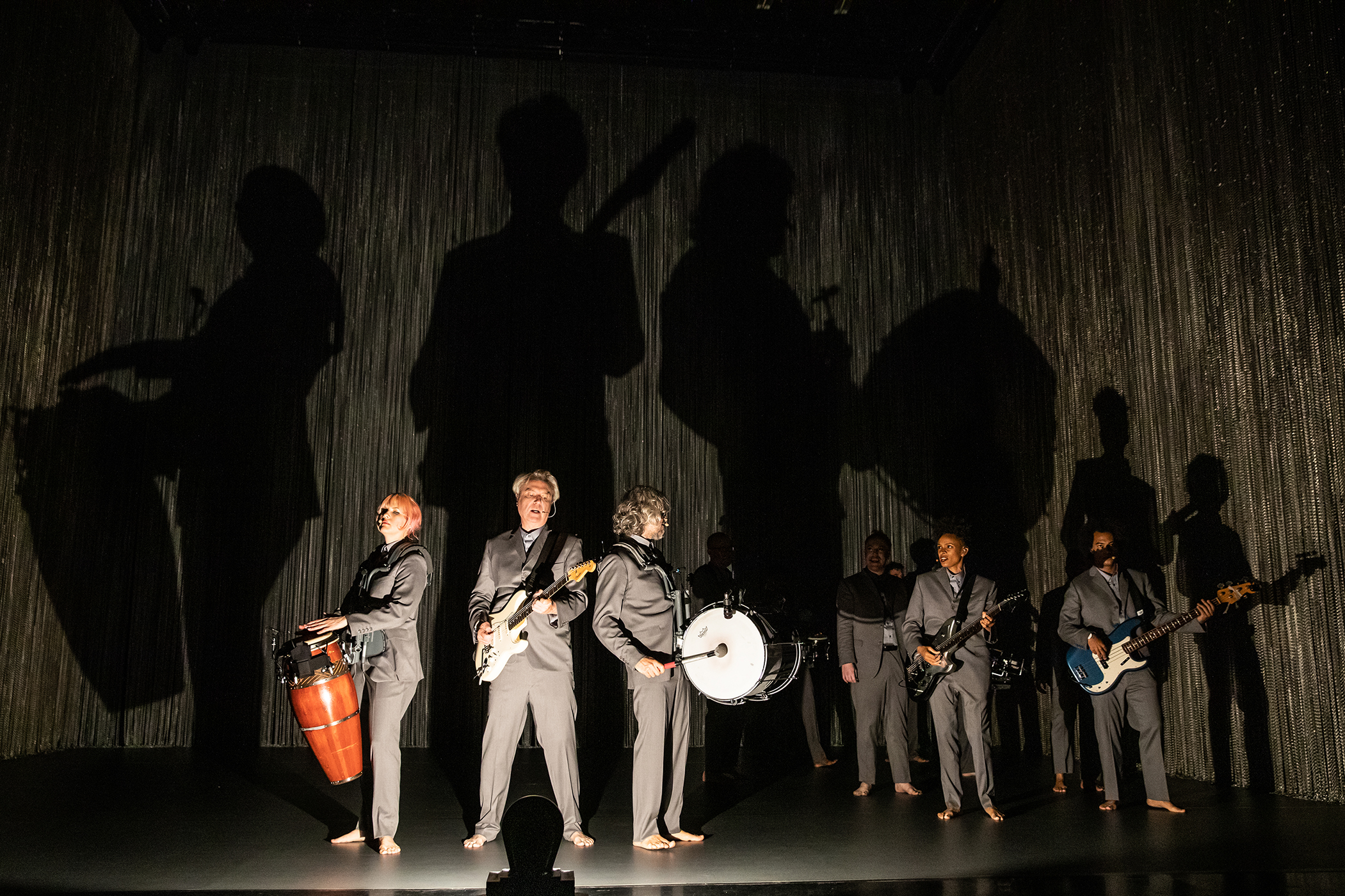
The bucolic-themed curtain (depicting trees and naming heartland locations such as Lubbock, Texas and Lincoln, Nebraska) rises on a stage resembling a silver-beaded box, where Byrne is sitting alone at a desk with a model of the brain, which he proceeds to show off to the crowd while singing “Here,” a selection from his new album, which speaks of neurons, hallucinations and comprehension.
Byrne (restrained and deadpan in manner) is soon joined by his companions, who wear matching gray suits, carry their instruments along their bodies (like a marching band, without any wires or cables) and perform rigid dance choreography devised by Annie P-Parson, ranging from isolated, Fosse-like body movements to geometric group formations.
There is no plot or discernible through-line behind “American Utopia.” However, when combined with Byrne’s frequent commentary to the audience (going over brain connections, James Baldwin and voter registration), the concert pays tribute to building community and expresses an optimistic attitude for the future.
One suspects that Broadway director Alex Timbers (who is credited as a production consultant) had a hand in shaping the show’s tone and flow.
Talking Heads fans more than made their presence known at my performance, often shouting back to Byrne, giving standing ovations after each song and dancing in the aisles. However, the real surprise and triumph of “American Utopia” lies in just how attractive and absorbing it can be to a mainstream theater-going audience.
As with Bruce Springsteen’s immensely popular and genre-defying solo show, “American Utopia” demonstrates that when it comes to pop stars, Broadway can do more than play host to silly bio-jukebox musicals and conventional concerts (such as Barry Manilow’s recent summertime engagement).
It can also serve as a showcase for exciting, experimental and original fare helmed with craft and showmanship. “American Utopia” may feel like a one-off, one-time attraction, but maybe it does not have to be.
3 1/2 stars
“American Utopia” runs through Jan. 19 at the Hudson Theatre. 141 W. 44th St., americanutopiabroadway.com.



